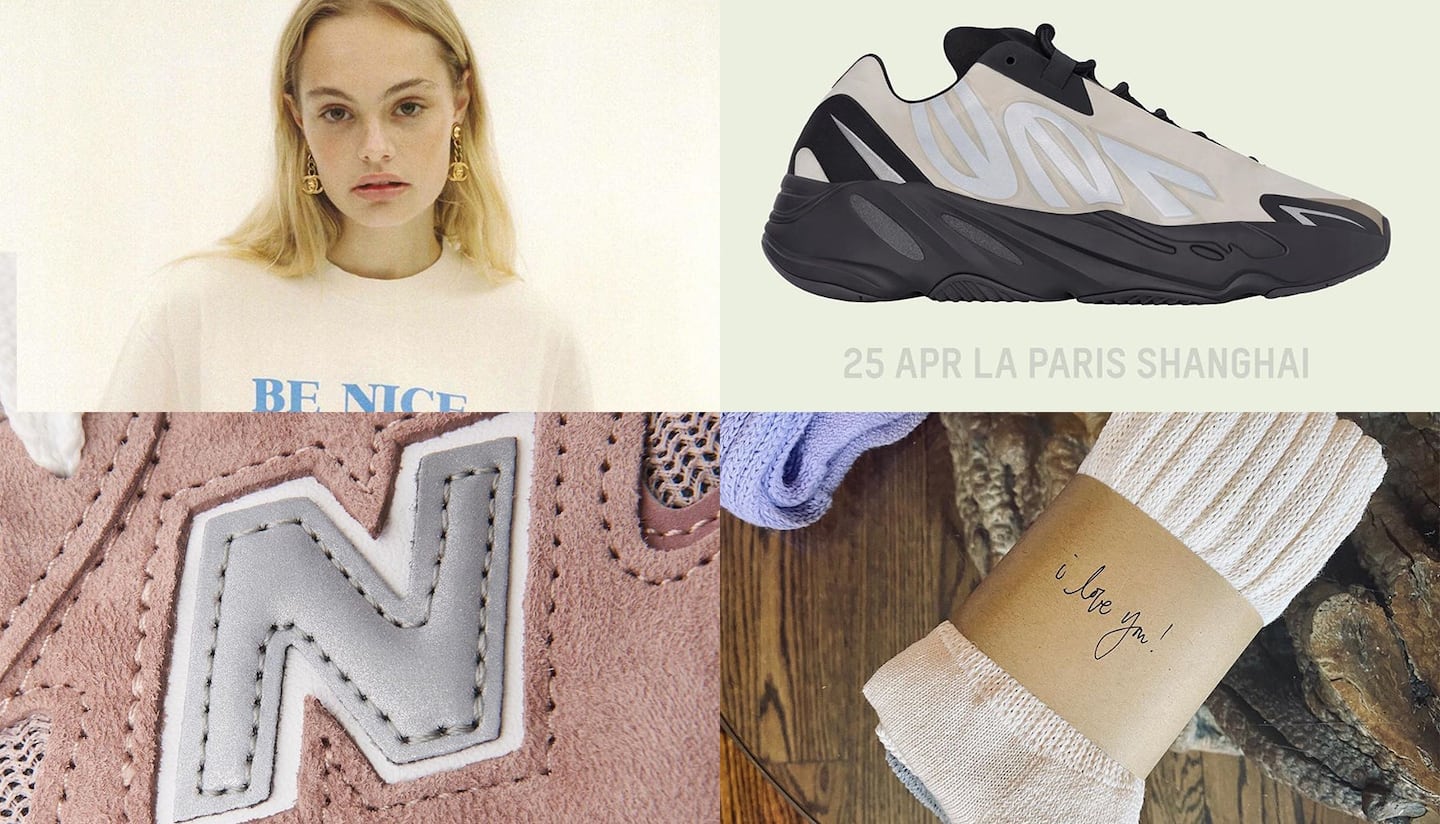
The Business of Fashion
Agenda-setting intelligence, analysis and advice for the global fashion community.

Agenda-setting intelligence, analysis and advice for the global fashion community.

NEW YORK, United States — Like many others in the western world, I am currently on lockdown in my home, relegated to dressing up for Zoom calls that encourage some modicum of presentability. I don't have much reason to buy clothes, but I still have some desire.
Which is how I found myself on Sportyandrich.com at 1pm ET on April 10. The Los Angeles-based line, which sells normcore-country club logo sweats, tees, shorts and tchotchkes, decided to reissue its $60 “Be Nice. Get Lots of Sleep. Drink Plenty of Water” T-shirt from Autumn/Winter 2020, along with a grey sweatsuit. I liked the T-shirt’s colour — azure-blue lettering printed on bisque-coloured cotton — the cut (longish short sleeves) and of course, slogan, ever so appropriate for the Covid-19 era. (And a conversation starter for awkward FaceTimes.)
I’ve ordered from Sporty & Rich before, and while I know Founder and Chief Executive Emily Oberg's limited releases typically sell out, I was surprised to find myself unable to make a purchase, in any size, at 1.02pm. I texted a friend we have in common, who advised me to “keep refreshing.” By 1.20pm, there was a confirmation email in my inbox.
According to Oberg, a bare-faced influencer and art director who has worked on projects with Kith, Bandier and Harmony (the Paris collection founded by her boyfriend, David Obadia), the few-hundred-unit run sold out in less than 10 minutes. From there, with the okay from her factory, she decided to open up the order, and ended up selling thousands of units. It was the brand's biggest release to date, on just three items.
ADVERTISEMENT
That weekend, I had a similar experience with Brother Vellies’ “Cloud” socks, which designer Aurora James is selling via her e-commerce site, one colour at a time. There may be fewer people currently in the market for a pair of her five-inch wooden platforms, but a cuddly, scrunchy pair of $35, Made-in-America socks often sell out in a matter of minutes.
These are but two niche examples of success in the middle of a retail drought unlike anything other. But they share something important. The drop model — where a product is made available at a specific time, in limited quantities — appears to still be working for some even though consumers aren't shopping much, if at all.
If you create a sense of scarcity and urgency for a product that is fundamentally desirable, it heightens demand.
Limiting the run of merchandise is an age-old marketing tactic. If you create a sense of scarcity and urgency for a product that is fundamentally desirable, it heightens demand. We’ve seen this with everything from Air Jordans to Hermès bags.
In fact, earlier in April, a run of Jordan 1s in "Court Purple" sold out — as they "always do," according to my hypebeast friend — as did a new version of the Yeezy 700, now listed on sneaker reseller StockX for $400, or twice their retail price. New Balance's latest collaboration with Kith — a 990v2 in dusty pink, something I myself might have copped, had I known — sold out instantly.
In the middle of the pandemic, everyday products like toilet paper, eggs and milk — and even more rarified food items like heritage wheat flour and heirloom beans — is so limited in availability that they are now also being distributed in drops. (My husband, too, was hitting the refresh button for an extended period while I tried to buy that Sporty & Rich T-shirt, except his wait was for a Whole Foods delivery slot on Amazon Prime Now.)
Drops are also entertaining. When we can't schedule dinners or attend live gigs or even plan a trip to the mall, they can even be exciting events to look forward to. Something to do.
Of course, this concept isn't new to the fashion world. In recent years, drops have been adopted widely by the industry, which took its cues from streetwear brands that have operated this way for decades. But with the exception of a few companies, including Moncler, which has used the success of its drops-driven Genius project to transform its supply chain and change its overall delivery cadence, few have embedded this way of working into their core business operations. Right now, as potential shoppers oscillate between hopelessness and hopefulness — as they search for a reason to buy — this approach has never felt more relevant, if not failsafe.
Oberg is cautiously optimistic about her next release, which has been pushed back to May. (Most of her product is manufactured on-demand in small batches, and her local dye house is currently closed.)
ADVERTISEMENT
"As more and more people lose their jobs, it may affect [sales] a month from now," Oberg said from her home in Los Angeles. However, as companies across the industry reckon with a mountain of unsold spring goods, she and her counterparts are in an enviable position: they have zero excess inventory and plenty of demand.
Related Articles:
[ What to Do With All That Excess InventoryOpens in new window ]
[ Who Is Still Shopping?Opens in new window ]
[ What Shoppers Are Thinking Right NowOpens in new window ]
The former CFDA president sat down with BoF founder and editor-in-chief Imran Amed to discuss his remarkable life and career and how big business has changed the fashion industry.
Luxury brands need a broader pricing architecture that delivers meaningful value for all customers, writes Imran Amed.
Brands from Valentino to Prada and start-ups like Pulco Studios are vying to cash in on the racket sport’s aspirational aesthetic and affluent fanbase.
The fashion giant has been working with advisers to study possibilities for the Marc Jacobs brand after being approached by suitors.